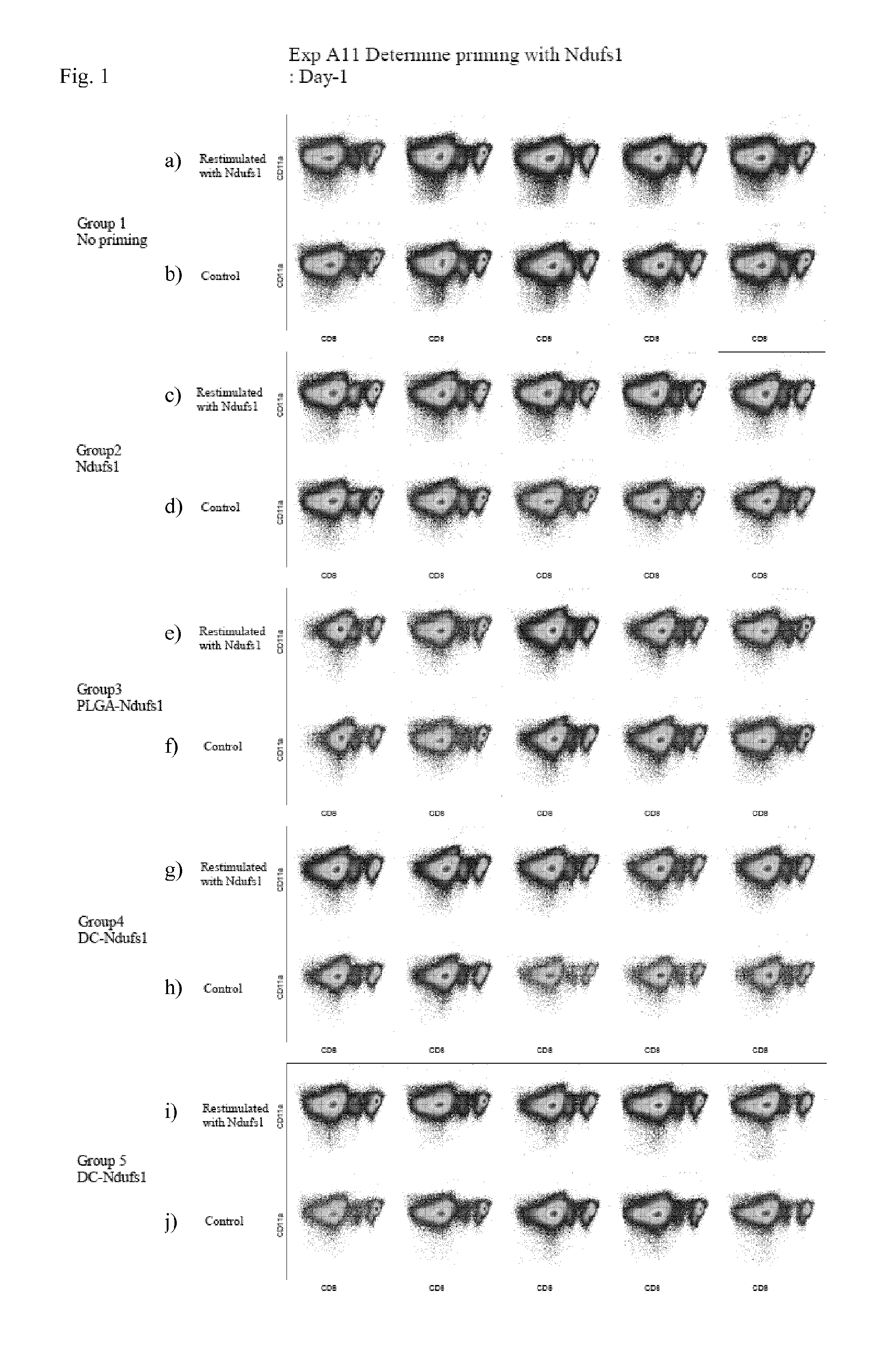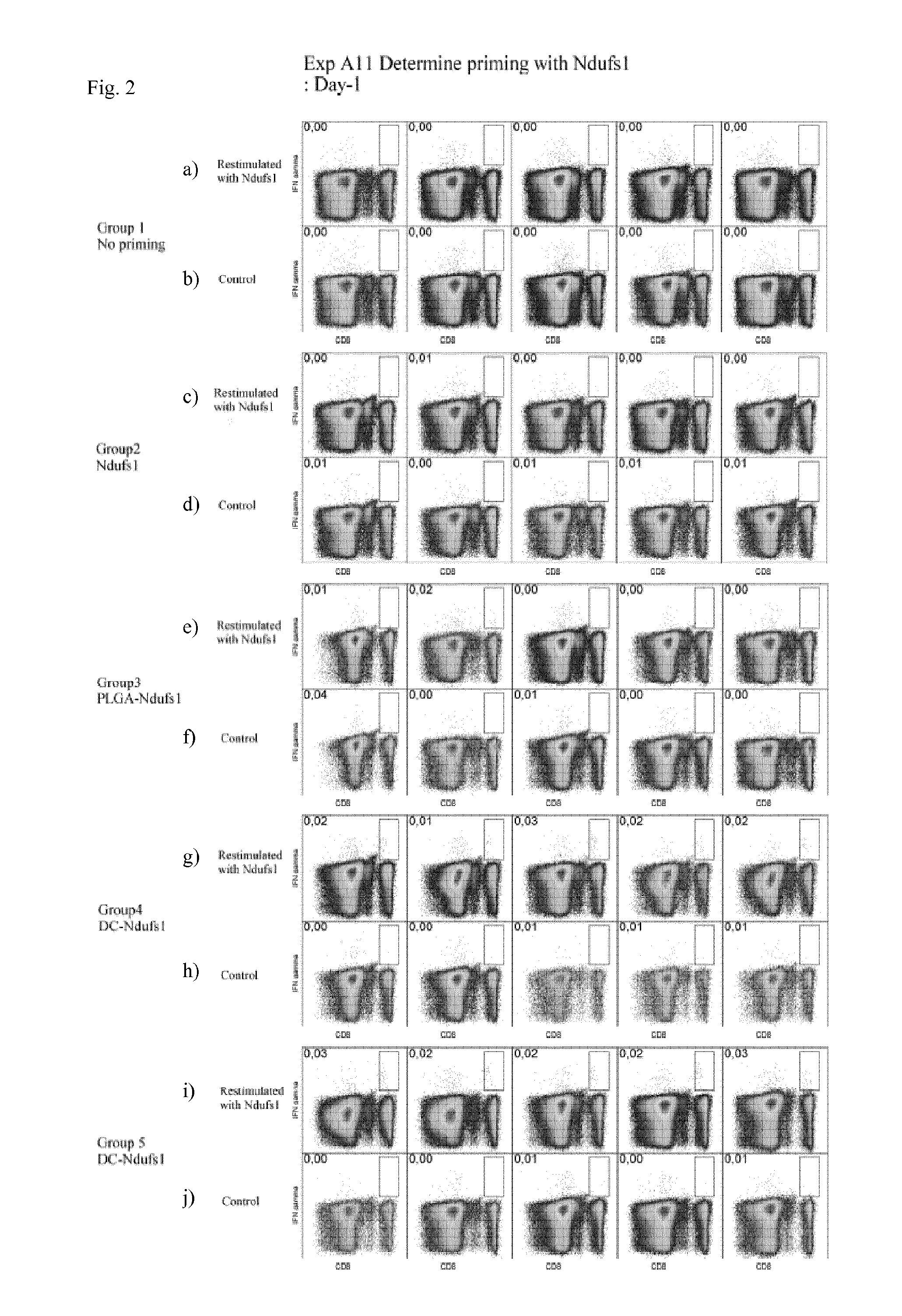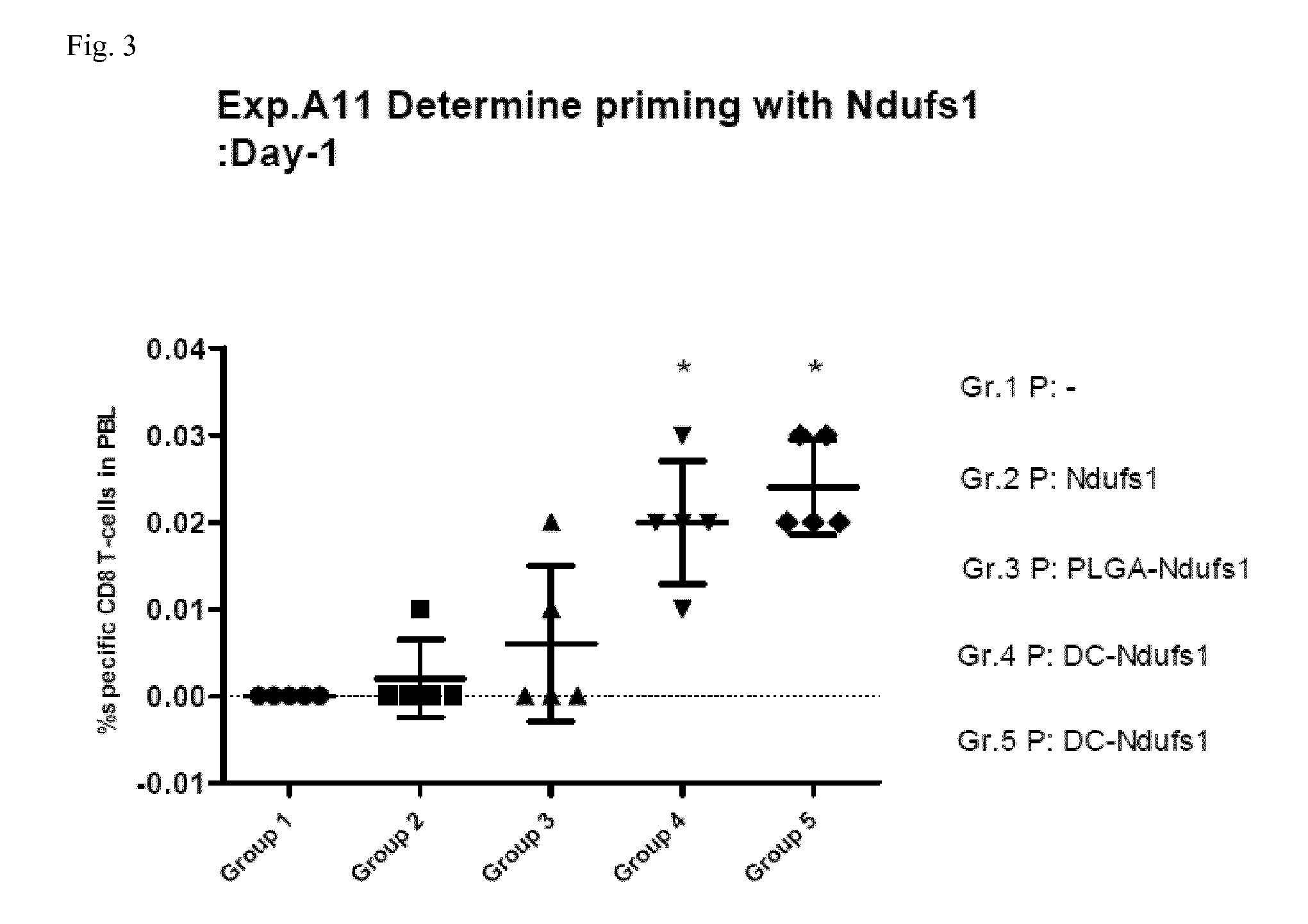Vaccine
a vaccine and anti-cancer technology, applied in the field of vaccines, can solve the problems of not supporting the survival of tumour-specific tsub>cm /sub, and affecting the long-term immune surveillance
- Summary
- Abstract
- Description
- Claims
- Application Information
AI Technical Summary
Benefits of technology
Problems solved by technology
Method used
Image
Examples
example 1
Immunization with Different First Compositions, Followed by Different Second Compositions
[0063]For priming, on day −7 mice received as a first composition either physiological saline (group 1), 100 μs soluble Ndufs1 peptide (group 2), 100 μg Ndufs1 peptide conjugated to 1 mg PLGA microspheres of 2 μm mean diameter (group 3), or 106 dendritic cells that were in vitro coated with 10 μg Ndufs1 peptide (groups 4 and 5) intravenously. 7 days later (day 0), mice received boosting by intravenous administration of a combination of 100 μg Ndufs1 peptide, 100 μg of agonistic anti-CD40 antibody (clone 1C10) and 200 μg of Poly(I:C) (groups 1 to 4), or again 106 dendritic cells that were in vitro coated with 10 μg Ndufs1 peptide (group 5) as the second composition. After the administration of the second composition, mice were bled from the mandibular vein on the days indicated below. After red cell lysis, peripheral blood mononuclear cells were stained with the following labelled antibodies: ant...
example 2
Generation of Antigen-Specific CD8+ T-Cell Response Against Tumour-Antigen
[0080]Following administration of the first composition at day −7, consisting of 106 dendritic cells that were in vitro coated with 10 μg Ndufs1 peptide in a vehicle, mice were administered with second compositions of the antigen 100 μg Ndufs1 and varying amounts of co-stimulatory antibody, exemplified by anti-CD40, and varying amounts of TLR agonist poly(LC). The results are shown in FIG. 10 for no boost by a second composition (left hand col., -Ndufs, -Poly I:C, -antibody (CD40)), and with the amounts indicated.
[0081]The results show that the co-stimulatory antibody of the second composition has a significant effect on the generation of the T-cell response, whereas the TLR agonist supports the effect the second composition, e.g. a comparison of 10 μg anti-CD40 with 20 μg or 200 μg Poly(I:C) shows raising similar proportions of CD11ahi CD8+ T-cells in total CD8+ T-cells; the same can be seen for 100 μg anti-C...
example 3
In Vivo Treatment of Tumour
[0083]As an example for a tumour, mice were subcutaneously injected with 107 CMT 64 cells (mouse lung carcinoma) to generate solid subcutaneous tumours seven days prior to the beginning of the immunisations.
[0084]Mice were administered with 106 dendritic cells that were in vitro coated with 10 μg Ndufs1 peptide intravenously on day −7. 7 days later (day 0), mice received the same composition again (DC-DC Ndufs),
or according to the invention with 106 dendritic cells that were in vitro coated with 10 μg Ndufs1 peptide intravenously on day −7. 7 days later (day 0), mice received boosting by intravenous administration of a combination of 100 μg Ndufs1 peptide, 100 μg of agonistic anti-CD40 antibody (clone 1C10) and 200 μg of Poly(I:C) (DC-COAT Ndufs), or mice were left without treatment as a negative control (Untreated).
[0085]The results are shown in FIG. 12, demonstrating that the treatment by DC coated with antigen followed by the boosting second composition...
PUM
| Property | Measurement | Unit |
|---|---|---|
| time | aaaaa | aaaaa |
| time | aaaaa | aaaaa |
| time | aaaaa | aaaaa |
Abstract
Description
Claims
Application Information
 Login to View More
Login to View More - R&D
- Intellectual Property
- Life Sciences
- Materials
- Tech Scout
- Unparalleled Data Quality
- Higher Quality Content
- 60% Fewer Hallucinations
Browse by: Latest US Patents, China's latest patents, Technical Efficacy Thesaurus, Application Domain, Technology Topic, Popular Technical Reports.
© 2025 PatSnap. All rights reserved.Legal|Privacy policy|Modern Slavery Act Transparency Statement|Sitemap|About US| Contact US: help@patsnap.com



